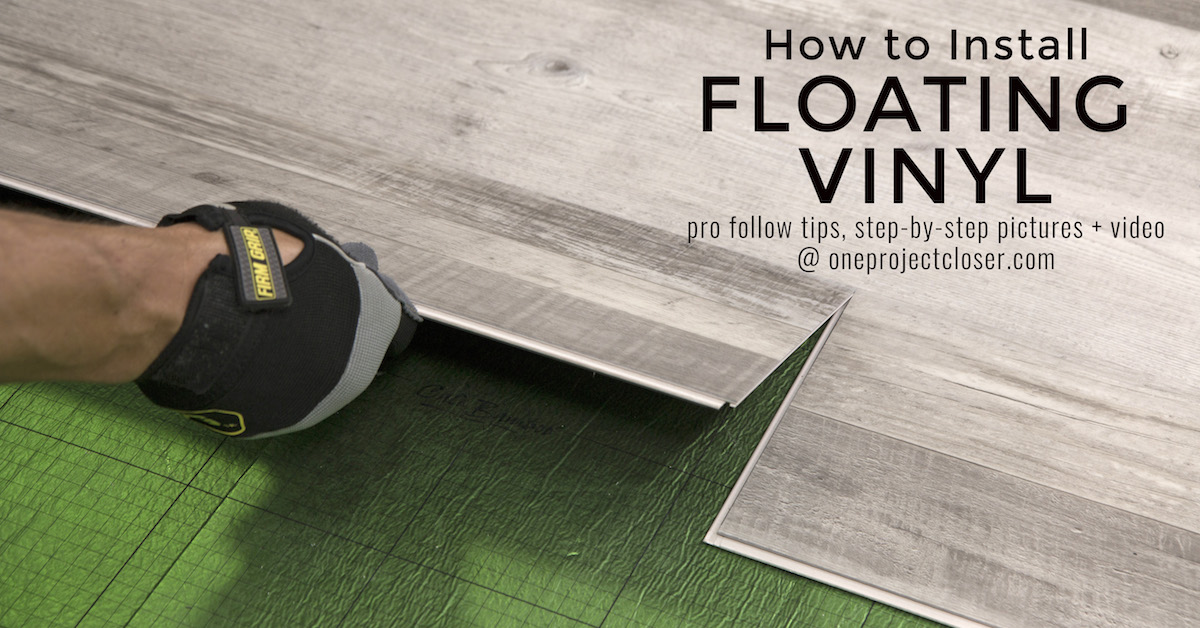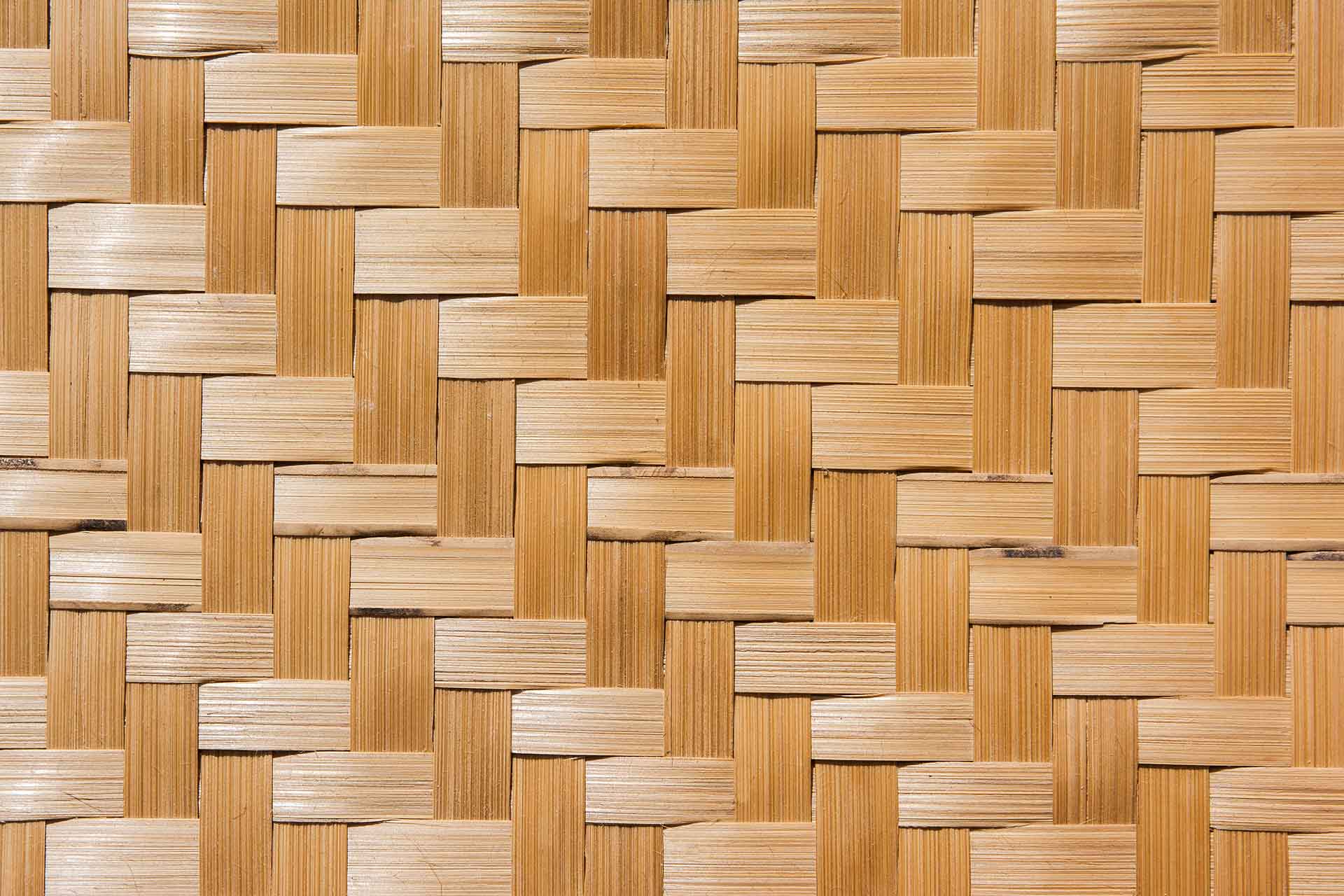Have you ever looked at your tiled floors and thought, “I wish these were bamboo?” Many homeowners find themselves yearning for the warmth and natural beauty of bamboo flooring, but the existing tile adds a layer of complexity to their renovation plans. So, the question arises: can you install bamboo flooring over tile? The answer, like many in the world of home renovation, is a nuanced one that depends on several factors.

Image: www.oneprojectcloser.com
This article delves into the intricacies of installing bamboo flooring over tile, exploring the pros, cons, and considerations that must be made. We’ll discuss the different types of tile and bamboo flooring, examine the potential challenges, and provide practical advice for a successful project. Whether you’re a seasoned DIYer or a first-time home renovator, understanding the nuances of this process can help you make informed decisions and achieve your desired results.
Understanding the Basics
Before diving into the complexities of installing bamboo flooring over tile, it’s crucial to grasp the fundamentals of each material.
Bamboo Flooring: A Natural Choice for Your Home
Bamboo flooring has gained immense popularity in recent years, thanks to its stunning aesthetic appeal, durability, and eco-friendly nature. This natural material is incredibly strong and resilient, making it ideal for high-traffic areas like hallways and living rooms.
There are two main types of bamboo flooring:
- Strand Woven Bamboo: This type of bamboo flooring is created by weaving together strands of bamboo into a dense, durable material. It’s incredibly strong and resistant to scratches and dents, making it an excellent choice for homes with pets or active lifestyles.
- Horizontal Bamboo: This type of bamboo flooring is made by slicing strips of bamboo horizontally and then bonding them together. It offers a more classic look and a slightly softer feel underfoot than strand woven bamboo.
Tile: A Versatile Flooring Option
Tile has been a staple in flooring for centuries, appreciated for its durability and easy maintenance. Tile comes in a dizzying array of materials, each with its unique characteristics and properties. Some popular tile options include:
- Ceramic Tile: This type of tile is affordable, durable, and available in an extensive range of colors and patterns. It’s often used in kitchens, bathrooms, and entryways.
- Porcelain Tile: Known for its impressive durability and water resistance, porcelain tile is often used in high-traffic areas and outdoor spaces.
- Natural Stone Tile: This category encompasses a broad range of materials, including marble, granite, slate, and limestone. Natural stone tiles bring a touch of elegance and sophistication to any space.

Image: onethatch.com
Can You Install Bamboo Flooring Over Tile?
The short answer is yes, you can install bamboo flooring over tile. However, it’s not as simple as laying down new flooring on top of the existing tile. There are several factors to consider before embarking on this project.
Factors to Consider When Installing Bamboo Flooring Over Tile
Here are some key factors to consider before installing bamboo flooring over tile:
- The Condition of the Existing Tile: If the tile is cracked, chipped, or uneven, it’s essential to address these issues before installing bamboo flooring. You may need to remove or repair the damaged tile.
- The Thickness of the Tile: The thickness of the existing tile will influence the overall height of the floor after installation. If the tile is exceptionally thick, it could make the floor too high for doors and other fixtures.
- The Type of Bamboo Flooring: Some types of bamboo flooring, such as engineered bamboo, are thinner than solid bamboo flooring. This can affect the feasibility of installation over tile.
- The Subfloor: The subfloor beneath the tile needs to be sturdy and level to support the bamboo flooring. If the subfloor is uneven or damaged, you may need to address these issues before installing bamboo flooring.
Advantages of Installing Bamboo Flooring Over Tile
Installing bamboo flooring over tile offers some advantages, including:
- Cost Savings: Removing existing tile can be a costly and time-consuming process. Installing bamboo flooring over tile can save you money and effort.
- Less Mess: Removing tile can create significant dust and debris. Installing bamboo flooring over tile can minimize the mess and disruption involved in a renovation.
- Faster Installation: Installing bamboo flooring over tile is typically faster than removing the tile and then installing new flooring.
Disadvantages of Installing Bamboo Flooring Over Tile
Despite the advantages, there are some disadvantages to consider before installing bamboo flooring over tile:
- Increased Floor Height: The added thickness of the bamboo flooring and any leveling materials can increase the overall height of the floor. This could lead to issues with doors, appliances, or other fixtures.
- Potential Unevenness: Even if the existing tile is relatively level, there may be slight variations that can create unevenness in the bamboo flooring. This can be noticeable underfoot and can affect the overall look of the floor.
- Increased Difficulty: Installing bamboo flooring over tile requires specific tools and techniques. It can be more challenging than installing bamboo flooring over a traditional subfloor.
The Process of Installing Bamboo Flooring Over Tile
If you decide to move forward with installing bamboo flooring over tile, it’s essential to follow these steps carefully:
1. Prepare the Existing Tile
Begin by thoroughly cleaning the tile to remove any dirt, dust, or residue that could interfere with the installation. Inspect the tile for any cracks, chips, or unevenness. You may need to repair or remove these issues to ensure a smooth and level surface for the bamboo flooring.
2. Determine the Levelness of the Tile
Use a level to determine the levelness of the existing tile. If there are any significant variations in height, you’ll need to address them before installing bamboo flooring. You can use a self-leveling compound or thinset mortar to level the tile surface.
3. Install a Moisture Barrier
Bamboo flooring is susceptible to moisture damage. Even with existing tile, installing a moisture barrier over the tile surface is crucial to prevent moisture from penetrating the subfloor and damaging the bamboo flooring. You can use a polyethylene plastic sheeting or a specialized moisture barrier product.
4. Install a Leveling Layer
To create a smooth and level surface for the bamboo flooring, you’ll need to install a leveling layer over the moisture barrier. There are several options available, including:
- Thinset Mortar: This is a traditional approach that involves applying a thin layer of mortar over the tile. It’s important to use a thinset mortar specifically designed for leveling applications.
- Self-Leveling Compound: This is a quick and easy option that self-levels to create a smooth surface. It’s available in a variety of thicknesses to accommodate different levels of unevenness.
- Plywood Subfloor: In some cases, you may be able to install a layer of plywood over the tile to provide a stable foundation for the bamboo flooring. Ensure that the plywood is securely attached to the subfloor.
5. Install the Bamboo Flooring
Once the leveling layer has dried completely, you can install the bamboo flooring. It’s crucial to use a method that will prevent the bamboo flooring from moving or shifting. This may involve using a floating installation method, a glue-down method, or a combination of both. Always consult the manufacturer’s instructions for specific installation recommendations.
6. Finishing Touches
After installing the bamboo flooring, apply any necessary sealant or finish to protect the flooring from moisture, spills, or scratches. It’s also important to install transition strips around doorways and other areas to create a smooth transition between the bamboo flooring and adjacent flooring materials.
Considerations for a Successful Installation
Installing bamboo flooring over tile can be a complex project. To ensure a successful installation, keep these additional considerations in mind:
- Hire a Professional: If you’re not confident in your DIY abilities or lack the necessary experience, it’s highly recommended to hire a professional flooring installer. A professional can ensure that the installation is done correctly, reducing the risk of problems later.
- Consult the Manufacturer: Before beginning the installation, consult the manufacturer’s instructions for the specific bamboo flooring you are using. This will provide essential information about the installation process and any special requirements.
- Plan Ahead: It’s crucial to plan your project carefully, taking into account the existing tile, the type of bamboo flooring, and the tools and materials you’ll need. Measure the area carefully and create a detailed installation plan.
- Time and Patience: Installing bamboo flooring over tile requires time and patience. Don’t rush the process. Take your time to ensure that each step is completed correctly.
Can You Install Bamboo Flooring Over Tile
Conclusion
Installing bamboo flooring over tile can be a great way to upgrade your home’s aesthetic appeal and enjoy the benefits of natural flooring. By carefully considering the factors discussed in this article, you can make informed decisions and achieve a successful installation. Remember, preparation is key to a smooth and lasting result. Whether you choose to tackle the project yourself or enlist the expertise of a professional installer, this comprehensive guide has provided the essential information to embark on your bamboo flooring journey with confidence.





